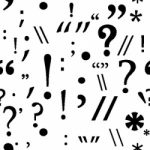I’ve recently spent a morning with a bunch of lovely authors at TJ Ink, learning about the independent publishing business, and giving a short talk about copyediting. I explained what it is, why you need it, and gave some examples of how it could work.
It came out sounding a little like a blog post, so I thought I’d share it here, as well as telling the authors at TJ Ink. I hope you enjoy it.
Caveat: if you’re writing a book, and have reached a place where writers block is a tangible thing sprawling across your hands, your characters seem to have taken themselves to the pub for a break while you sort yourself out, and your story arc has more lumps than the back of a stegosaurus, what you may need is something a little more intensive than a copyedit. This is not a blog about that process, which is known as a structural edit. Sorry about that!
So, what is copyediting, and why do you need it?
When you write anything, whether it’s a leaflet about your business, a dissertation, a bid to tender for a contract, an article for a magazine or newsletter, or a multiple-thousand word book, you need to remember that you’re writing to be read, and anything you can do to assist people to read your writing is a good thing. Anything jarring in your text, caused by typos, grammar mistakes, mis-used words, or anything at all that causes the writing to feel clunky, will register like a speed bump for your reader, and slow the flow. Which is not good.
“But Hannah”, you say, “I’ve spent hours writing this.” 
Indeed you have. And that’s part of the reason you need a copyeditor to have a look at it!
You can get too close.
 You become so immersed in the text that you’re writing that you can fail to see it properly any more.
You become so immersed in the text that you’re writing that you can fail to see it properly any more.
Also, it’s more than possible to put down on the page what you meant to say, but have it come out meaning something entirely different.
Those tricky homophones can be great for tripping you up like this. Spellcheck won’t always notice if the word you’ve put in wrong is nevertheless an actual word. (‘The bored meeting decided…’)
Another reason for copyediting is that you, as the writer, are the expert on the subject about which you are writing, where I am the expert on writing. (I hope, anyway – and other copyeditors are available!)
Copyediting then…
It can be for any manuscript, leaflet, report, etc.
It will look at grammar, spelling, typos, punctuation, language errors, and more in-depth areas such as consistency, continuity and context.
It’s not unusual to see typos such as ‘you’ instead of ‘your’ where the r has been missed off, and no-one has noticed, or ‘to’ for ‘too’. Your eye reads what it thinks ought to be there (sometimes ‘they’re’ or ‘their’ as well…) and you can even insert words that your eye thinks should there. (Did you spot the missing ‘be’ in that sentence?) And doubled words, especially if they are are disguised by a line break. (Did you see that as well?)
Sets of letters which can be either one or two words are another common trip-up. Awhile and a while for instance. ‘Awhile’ is an adverb – ‘I’m going to be awhile’ (like ‘I’m going to be late’), where a ‘while’ is a noun – ‘I will be back in a while’ (like ‘I’m going to be back in an hour’).
Another thing the eye finds it hard to spot in text you’ve read dozens of times is simple transposition. Switching order the of words, or letters witihn words. (You still with me? There were two in that last sentence!)
Punctuation
I love a good semi-colon; properly used it makes perfect sense in a sentence.
And my friends will tell you that I have had a thing about commas for many years. You can change the whole meaning of a sentence with a comma
How many people are there in the photo?
I had a photo taken with my parents Superman and Wonderwoman
3
I had a photo taken with my parents, Superman and Wonderwoman.
… you’ve got super powers yourself, and can probably fly!
Or 5
I had a photo taken with my parents, Superman, and Wonderwoman.
… you were on holiday at Disneyland.
Correct allocation of speechmarks can help the reader understand what’s going on. I’ve had to go back in books before and try to unravel the segment I’ve just read, mentally placing closing speechmarks.
And one of my pet hates is the kind of monstrous sentence that just goes on forever because the author has forgotten that the most basic kind of punctuation is a full stop, which is sometimes necessary in order for the reader to actually take a breath from time to time and give a little rhythm to a piece of writing.
QED
Language errors are often funny to read. Sometimes they are made purely because the author is unaware of the correct phrase, or have only heard a particular word or phrase in spoken English, never written. The phrase ‘to toe the line’, meaning to do one’s job, and live up to what is expected of one, derives from the old sport of bare-knuckle boxing, where competitors were required to advance to a line at the start of each round, but I’ve seen it rendered as ‘tow the line’. You can see where that error came from!
Authors shooting too high, using big words they don’t really understand, can sometimes produce interesting results. A more charitable explanation might be that they mis-spelled a word, and then chose the wrong option in the spellchecker. Who knows, but either way, I’ve seen exacerbate for exasperate recently…
A good copyeditor will be fluent in the more abstruse vocabulary periodically utilised by the pseudo-erudite to embellish their pronouncements, and endeavour to formulate coherence from a gallimaufray. I.e. a good copyeditor will be able to use big words right!
Consistency in any piece of writing is important, for instance, deciding that you are going to refer to your company in the third person (‘HD Words is a small company…’), then switching to the first person part way through (‘I work directly with all my clients…’). Or in a cook book using the same abbreviation throughout for tablespoon.
Where you have been cutting and pasting, moving paragraphs or sentences around, it is easy to introduce timeline errors. Having a character in a book leave the room then deliver some more dialogue, or put a cup into the dishwasher, then take a final sip are easy mistakes to miss. In business documents you might find yourself saying ‘and finally’, then making two more points.
 A good copyeditor will spot all these things, and more – and will make a huge difference to the final presentation of your book. Even if the copyeditor is able to report ‘there were no errors’, then you have the assurance that your book is error-free, which is a useful thing to know! (However, after having given this information on a book, the copyeditor will probably have to go and lie down in a darkened room, and wait for the pigs to cease their flypast.)
A good copyeditor will spot all these things, and more – and will make a huge difference to the final presentation of your book. Even if the copyeditor is able to report ‘there were no errors’, then you have the assurance that your book is error-free, which is a useful thing to know! (However, after having given this information on a book, the copyeditor will probably have to go and lie down in a darkened room, and wait for the pigs to cease their flypast.)
Proofreading is a separate thing, and usually occurs at the last minute before something is sent to print. Which is a whole other blog post.
I hope this has informed and entertained you on the subject of copyediting. I have a lot of experience in this area, and am happy to discuss any requirements you may have.



Leave a Reply